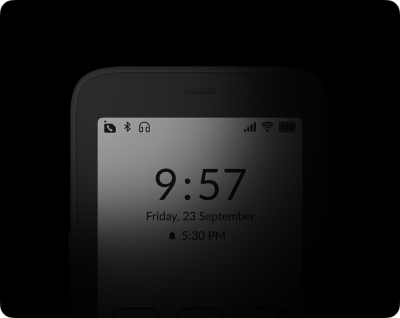
Does Radiation Poisoning Affect Plants?
It isn’t only humans who are at risk with regards to the potential health effects of being exposed to mobile radiation. Radio Frequency (RF) radiation comes into contact with every person, tree and animal exposed to it.
Radiation levels depend on the location of the transmitter and any other sources of radiation in the vicinity. We need to remember that all living things are influenced by the RF emitted from wireless electronic devices and cell phone masts.
A number of studies haven taken place, in various countries, on the impact mobile radiation has on trees. All of these studies showed similar results. Researchers found that trees are indeed vulnerable to radiation, it’s especially easy to see when you compare the trees found in low-radiation areas with those in urban ones.
When experimenting on plants, researchers often use bean sprouts because they are easy to grow and germinate quickly. It is easy to see any changes in their growth when compared to plants which were not exposed. Thanks to this kind of research, any irregularities are going to be noticed.
3 studies on the impact of mobile radiation on trees and plants
Wageningen University, Holland[1]
Researchers from Wageningen University in Holland investigated ash trees in areas with high WiFi activity. They noticed that trees were suffering from symptoms which didn’t resemble any known bacterial or viral illnesses.[1] The death of parts of the leaves, abnormal growth and fissures in the bark were observed.
Twenty ash trees were exposed to different kinds of radiation in order to test the hypothesis that their condition may be caused by electrosmog or radiation poisoning. The experiment took three months. After that time leaves indicated the oncoming death as they were covered by a lead-like shine.
Researchers found that in recent years the amount of trees infected by radiation has grown drastically. 70% of Dutch urban trees are suffering from radiation poisoning, five years ago it was only 10%. They concluded that this was due to the growth of WiFi usage in cities.[2][3]
Cornelia Waldmann-Selsam and Horst Eger, Germany[5]
Researchers stated that exposure to non-ionizing radiation is becoming so common in urban areas that it has to be connected to the deteriorating condition of trees, especially those in the vicinity of mobile phone base stations.[4]
RF radiation levels around damaged trees were significantly higher than those measured close to the undamaged plants. Moreover, the scientists stated that some of the trees are damaged only on one side, the one facing a phone mast. It turned out that radiation poisoning usually starts on one side and then spreads to the whole plant.
perfect illustration depicting the way cell phone towers affect plants
The illustration above depicts tree damage by electromagnetic waves. Trees in front of the building die because they are exposed to the electromagnetic waves of the transmitter (on the right). In the shadow of the building they grow without disturbance. Those at the edges die (or are partially affected) where the protective effect of the building ends. For comparison, researchers selected and observed thirty trees in low radiation areas where there were no cell phone stations, those trees showed no damage.[5] This study lasted for six years and is important for environmental reasons.
In conclusion, it’s noted that ‘recruitment of new trees is now occurring at a lower rate than mortality’ so with technology influencing the trees in such a bad way, it will be much faster to decrease the number of trees. WiFi and mobile radiation is killing urban trees faster than they can be replaced.
The effect that mobile radiation has on trees
In 2016 there was an additional report published. It confirmed the observation made by Waldmann-Selsam and Eger. It’s also full of pictures so that you can see for yourself how strong the damage is over years of radiation exposure.[6]
Jadavpur University, India[9]
India is one of the fastest growing telecom markets in the world. Teledensity has been reported to have grown from 3,5% in 2001 to 78% in 2015.[7] Indian scientists are not only studying the impact of radiation on animals but also on plants, which has made them pioneers in this field.
A few years ago scientists from the university’s electronics and telecommunications engineering department indicated that mobile phone radiation affects plants and vegetables.
For the experiment, they used mobile phones working on regular power and fifty chilli plants. They exposed the plants to radiation from the seed stage. Growth took longer when compared to seeds which were not exposed. The plants which were affected by radiation had wrinkled leaves, which didn’t occur in their counterparts.
Professor Bhaskar Gupta, who led the study, said that his experiment only reveals plants are affected by mobile radiation.[8] Only half of the seeds exposed to radiation germinated (in the group of unexposed seeds more than 75% developed).
A woman in a pink top hugging a tree
How can we protect our trees?
There is no need to explain that trees and other plants play an important role in our environment. They produce oxygen, control noise pollution and clean the air, among other positive values. If they are seeded in places where levels of radiation are high, they won’t live long.
As scientists have proved, plants and trees are also affected by EMF. Some people advise wrapping all of the urban trees in tin foil but this isn’t really a viable solution to the problem.[1]
Ideally, more research needs to be done. For now, it is important to know that even plants could suffer from being exposed to non-ionizing frequencies. We need to be aware of the potentially adverse effects our modern technology (which we’re so keen to use) has on the world around us.
There are some interesting experiments taking place, even in schools.
Does Wifi harm plants?
Read more about the effects of radiation on bees.
Is there anything you’d like to add, have we missed anything? If you’re interested in sharing your experiences with us or writing a guest post for us, send us an email via hello@mudita.com!
Please feel free to get in touch via social media (send us some photos or videos too), you can find us on Facebook, Twitter and Instagram, let’s connect! To learn more about Mudita, take a look at our website and our other posts.
If you enjoyed reading this article, please share and recommend it!
Related stories

First glimpse of Mudita Kompakt
Mudita Kompakt is Mudita's upcoming minimalist phone with an E-Ink touchscreen, designed for simplicity and reducing digital noise.

8 Pillars of Mental Fitness
Discover the 8 pillars of mental fitness. Learn how they can transform your life for a more holistic well-being.

The Compelling Case for Reinstating the Classic Alarm Clock
Discover the transformative power of Mudita Bell and Mudita Bell 2 alarm clocks in enhancing your sleep hygiene.
If you'd like to receive the best stories from our blog, keep up to date with our progress and get notified about our product releases and special discounts.